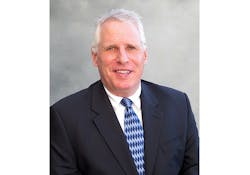Why the Rep’s Local Touch Still Matters
With NEMRA’s Annual Conference just a week away at press-time, I found myself thinking about how much things have changed in the rep world since I attended my first NEMRA Conference 35 years ago.
Back then, many of the association’s founders were still active with their rep firms and were regular attendees at the association’s conferences. You could walk across the lobby at a NEMRA meeting and visit with a Who’s Who of electrical industry executives and legends, folks like Dick Noel, the association’s founder; Tom Preston, NEMRA’s long-time NEMRA president; George Farley, who worked with Preston at NEMRA for many of its fledgling years after a distinguished editorial career at Electrical Wholesaling; and Hank Bergson, who took over for Preston as NEMRA’s leader in 1985 and led the association until 2009 and handing the baton to Ken Hooper.
Many if not most of the faces have changed from then at the association Jim Johnson now leads as president and CEO. You see a new generation of young people, and a much more diverse membership than you saw even five or 10 years ago. Another big change is that NEMRA reps are servicing more end-user markets than ever before, including the industrial OEM market, renewables, building automation, and a much wider mix of applications and customers in the lighting market.
The biggest change in the rep world over the past year was, of course, the COVID-19 pandemic. As you will learn in this issue’s Q&A with NEMRA’s Jim Johnson (p. 14), in 2020 the COVID-19 pandemic forced reps and their manufacturers to learn new virtual selling skills because they couldn’t always make sales calls to distributors, contractors, industrials and other buying influences. And they had to learn how to keep their companies’ operations running smoothly in the new remote office/work from home environment.
Other challenges are forcing reps to reimagine their role in the market. Mergers and acquisitions have created some mega-reps that would dwarf many of the members in NEMRA’s formative years because of their geographic reach into multiple states.
Technology is another game-changer. Reps have had to learn how to harness cloud storage, sophisticated business software, EDI, computerized point-of-sale and market data, cell phones, tablets and other now-indispensable tools of the trade. They have also had to learn how to sell much more complex products. Thirty-five years ago, I couldn’t image reps selling things like app-based lighting control, LED lighting systems that can last for 50,000 hours, or brainy industrial controls that make the programmable logic controllers (PLCs) and rudimentary sensors for the factory floor of the 1980s look positively prehistoric.
But the game in many ways is still the same. Why? Because the local touch of the NEMRA rep and the reps’ relationships with distributors and manufacturers still matter. In countless speeches over the years at NEMRA Conferences, speakers talked about how reps, manufacturers and distributors form a three-legged stool that will topple over if all three legs aren’t working together to support the industry as a whole. And NEMRA’s new logo incorporates a chain to show how these three players must be linked together for mutual profit.
Jim Johnson succinctly summarized the role of the rep in this month’s cover story when discussing how reps adapted to the pandemic. “Representatives reimagined and reinvented,” he said. “They went out to job sites and utilized their phones, iPads and notebooks to contact regional managers at manufacturers or other internal contacts, like product managers and quality managers, to serve and address the customers needs, quickly and efficiently. The reps said, “I am on the jobsite, or I am with the customers, here is the issue. Let me introduce you to the customer. Let’s go through the product and assess it right here.”
As long as reps continue to hone their local market touch, they will continue to be the integral link between manufacturers and local distributors, contractors and other buying influences.
